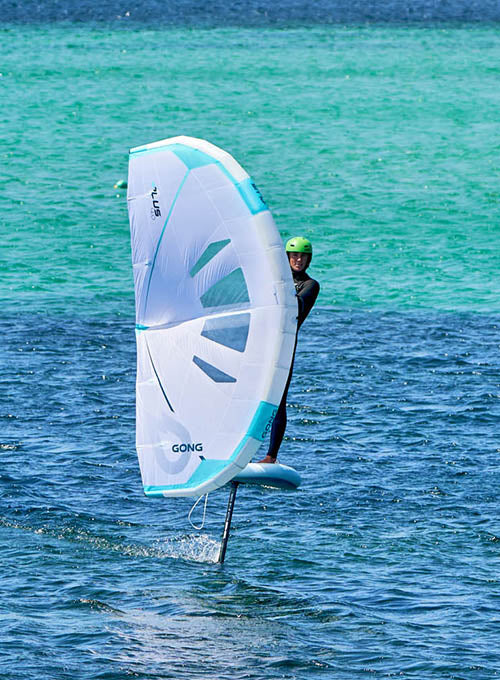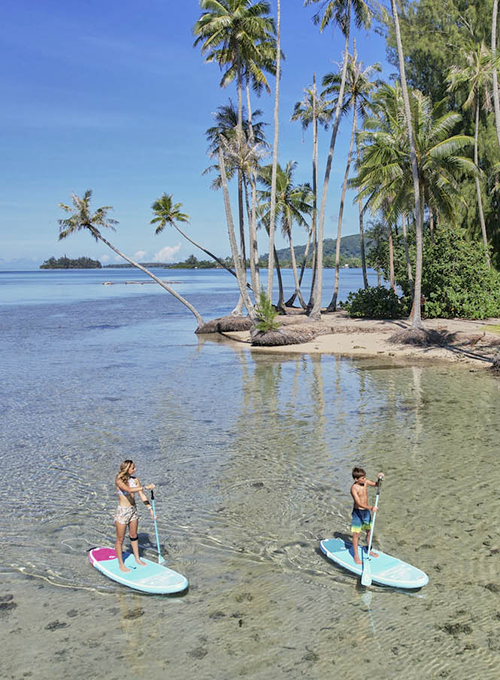HOW TO: FIND THE RIGHT SPOT!!!
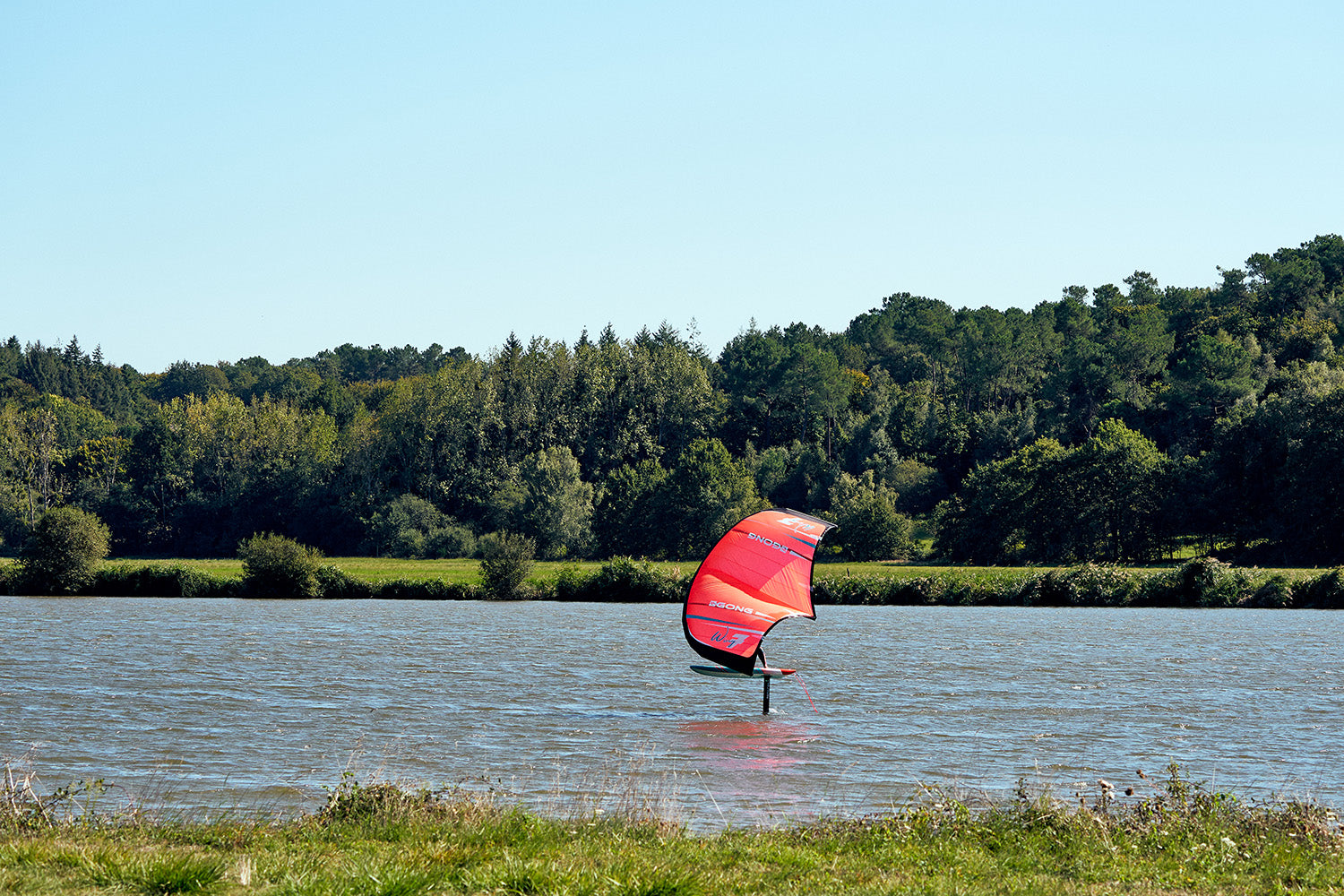
In order to find the right spot, you first have to envision three dimensions:
- its length
- its width
- its depth
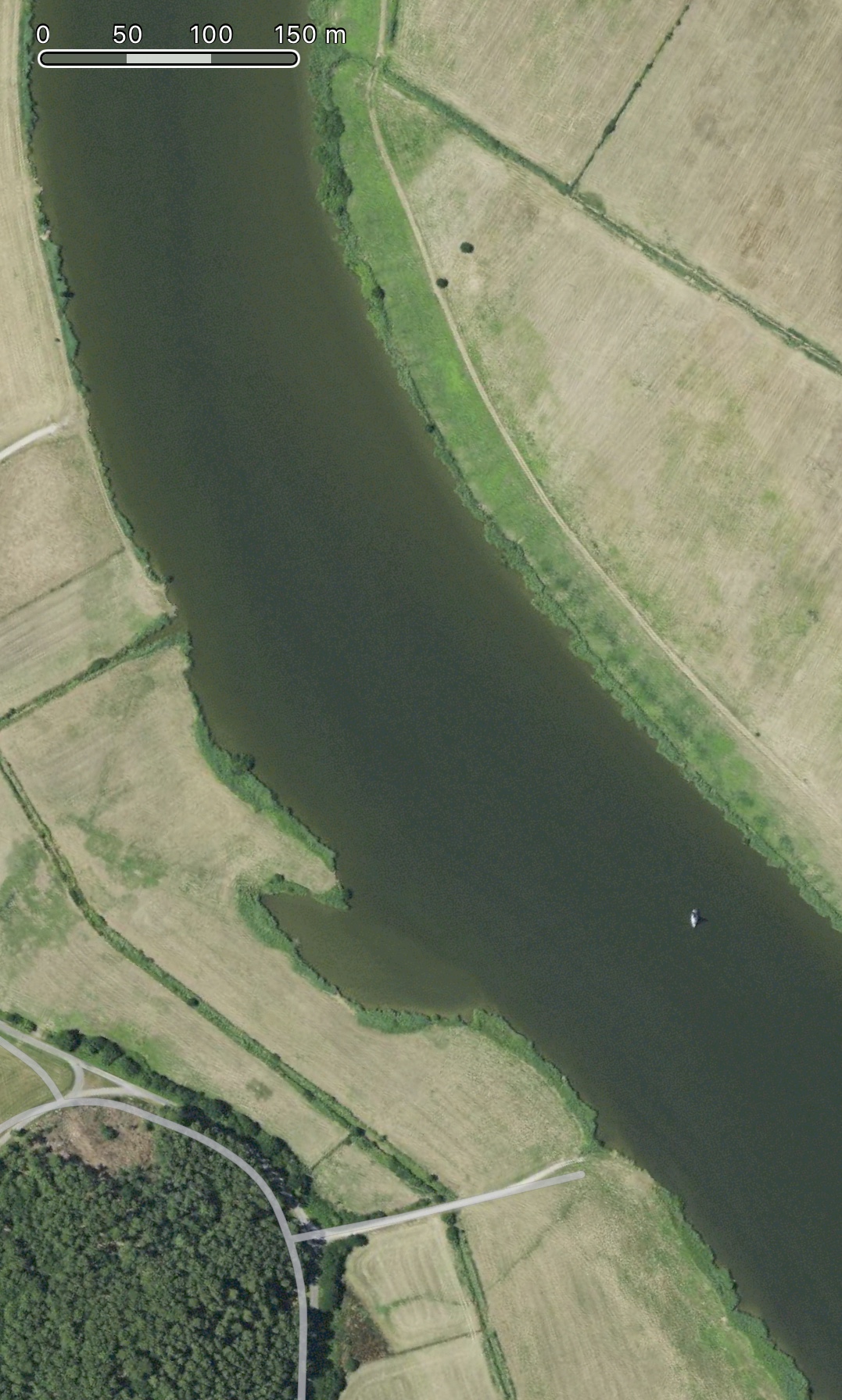 The other important aspect in choosing a good spot is the waves. The Wing is a fabulous tool but unfortunately relatively fragile if you let it get chewed by the waves. Same for the Foil which hates to be picked up by the waves. So, it is absolutely necessary to avoid the shore break, the spots with powerful waves and all the spots which can send you in the waves by mistake (drop of wind, current…). Remember that the ocean has tides and that a flat spot at low tide can become devastating at high tide when you want to get out of the water.
You must then consider the direction of the wind. Of course, it will be difficult to get out of the water in a perfect onshore wind. The most difficult thing about a sea breeze is getting through the waves because inevitably you will have waves. Then, getting on the Board without the Foil hitting the bottom is also very complicated because every time you try to launch you will drift slightly to the edge; you will be pushed by the waves; you will hit the waves and POW, the Foil hits the bottom and you have to start all over again (if you haven’t broken anything…).
On the other hand, if the wind up is easyyyy, it will be just as difficult to come back in an offshore wind or even dangerous. Indeed, the offshore wind will take you out to sea. And even if your Foil allows you to course easily, you still have to be able to come back on Board. As the onshore wind is generally irregular, it can complicate everything. The huge advantage of the Wing in a land wind is that you have a Board with volume. In the worst-case scenario, you can lie down on the Board, attach the Wing to your foot and row quietly towards the edge. But beware if the wind is strong this maneuver is impossible because you will drift faster towards the open sea than you can paddle back. There the danger is real. Below 15 knots you can paddle a few dozen meters into the wind. But above 20 knots it’s impossible and that’s when the big worries begin, which means calling for help: the disaster… Same thing if you get injured, you won’t be able to get back to shore and the wind will carry you out to sea with your injury.
The best orientation is therefore the crosswind, known as “side shore”. With a crosswind, you can leave and come back without difficulty. It is therefore this type of condition that you should look for.
Stable conditions are a key factor in your safety. The tide will change, but so will the weather. Some spots are more prone than others to these changes. You need to be aware of this and prepare for it, even if you have to give up. A good Winger is an old Winger ?
You have to avoid spots with rocks or know them perfectly, which is not the case if you are looking for a spot. Rocks are a danger for your Foil, for your Wing, but also for you. Imagine what happens if you fall at full speed into them, or if the waves throw you into the rocks…
Seaweeds and grass in the water are also a real problem because they will tie up your Foil and prevent you from flying properly. A serious pain.
The current can be a real problem or an asset. Having the current in the windward direction is the worst thing: everything will take you downwind. You will spend your session heading… In this case, you will have to be very careful that downwind there is absolutely no danger to which you could inadvertently run aground. If the wind is against the direction of the wind, then in case of a problem, the current will keep you there and you will be able to return home without much difficulty: paradise. Beware, the currents can vary in intensity and reverse in the ocean!
Vigilance concerning the others which at least in your beginnings will represent a potential problem: Windsurfing Boards, Kites, Jet Skis, Boats etc… all the maritime traffic can cause you problems. You must be careful to go to a free and clear spot to allow you to navigate in complete serenity.
The other important aspect in choosing a good spot is the waves. The Wing is a fabulous tool but unfortunately relatively fragile if you let it get chewed by the waves. Same for the Foil which hates to be picked up by the waves. So, it is absolutely necessary to avoid the shore break, the spots with powerful waves and all the spots which can send you in the waves by mistake (drop of wind, current…). Remember that the ocean has tides and that a flat spot at low tide can become devastating at high tide when you want to get out of the water.
You must then consider the direction of the wind. Of course, it will be difficult to get out of the water in a perfect onshore wind. The most difficult thing about a sea breeze is getting through the waves because inevitably you will have waves. Then, getting on the Board without the Foil hitting the bottom is also very complicated because every time you try to launch you will drift slightly to the edge; you will be pushed by the waves; you will hit the waves and POW, the Foil hits the bottom and you have to start all over again (if you haven’t broken anything…).
On the other hand, if the wind up is easyyyy, it will be just as difficult to come back in an offshore wind or even dangerous. Indeed, the offshore wind will take you out to sea. And even if your Foil allows you to course easily, you still have to be able to come back on Board. As the onshore wind is generally irregular, it can complicate everything. The huge advantage of the Wing in a land wind is that you have a Board with volume. In the worst-case scenario, you can lie down on the Board, attach the Wing to your foot and row quietly towards the edge. But beware if the wind is strong this maneuver is impossible because you will drift faster towards the open sea than you can paddle back. There the danger is real. Below 15 knots you can paddle a few dozen meters into the wind. But above 20 knots it’s impossible and that’s when the big worries begin, which means calling for help: the disaster… Same thing if you get injured, you won’t be able to get back to shore and the wind will carry you out to sea with your injury.
The best orientation is therefore the crosswind, known as “side shore”. With a crosswind, you can leave and come back without difficulty. It is therefore this type of condition that you should look for.
Stable conditions are a key factor in your safety. The tide will change, but so will the weather. Some spots are more prone than others to these changes. You need to be aware of this and prepare for it, even if you have to give up. A good Winger is an old Winger ?
You have to avoid spots with rocks or know them perfectly, which is not the case if you are looking for a spot. Rocks are a danger for your Foil, for your Wing, but also for you. Imagine what happens if you fall at full speed into them, or if the waves throw you into the rocks…
Seaweeds and grass in the water are also a real problem because they will tie up your Foil and prevent you from flying properly. A serious pain.
The current can be a real problem or an asset. Having the current in the windward direction is the worst thing: everything will take you downwind. You will spend your session heading… In this case, you will have to be very careful that downwind there is absolutely no danger to which you could inadvertently run aground. If the wind is against the direction of the wind, then in case of a problem, the current will keep you there and you will be able to return home without much difficulty: paradise. Beware, the currents can vary in intensity and reverse in the ocean!
Vigilance concerning the others which at least in your beginnings will represent a potential problem: Windsurfing Boards, Kites, Jet Skis, Boats etc… all the maritime traffic can cause you problems. You must be careful to go to a free and clear spot to allow you to navigate in complete serenity.
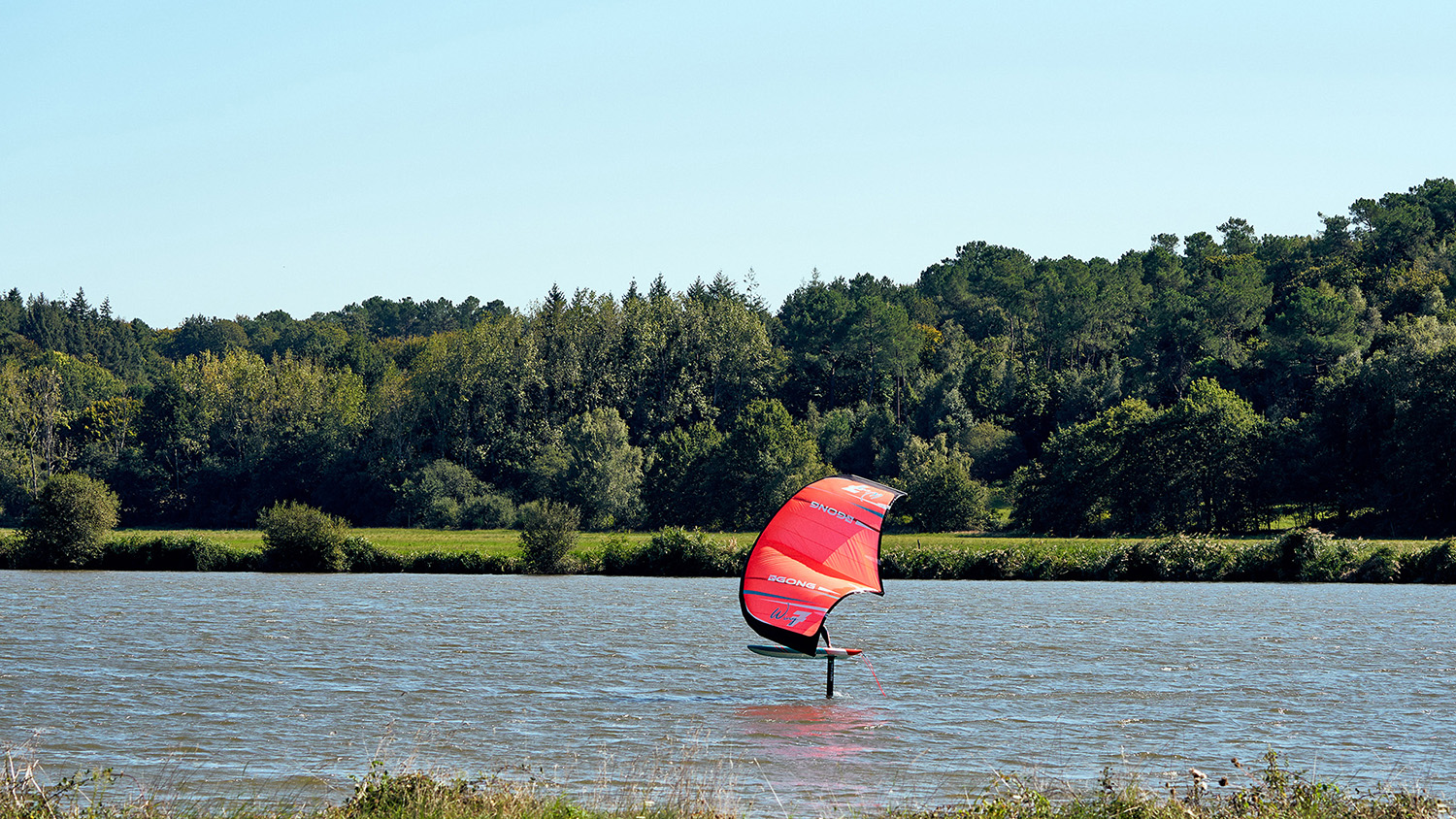 On the other hand, be careful if you come across a deserted spot: it is as sure as there is a reason. It must arouse suspicion in you. Remember that no one will help you if you are alone.
The distance and the isolation make you dream but pose logistical problems for both you and the rescue team. Be careful.
One last point of vigilance: regulations. As it stands, they are the same as those for Windsurfing in most countries. It must be respected, especially when wearing a floatation system. And it is imperative to have a leash on the Board and one on the Wing, both in good condition.
Key Points:
On the other hand, be careful if you come across a deserted spot: it is as sure as there is a reason. It must arouse suspicion in you. Remember that no one will help you if you are alone.
The distance and the isolation make you dream but pose logistical problems for both you and the rescue team. Be careful.
One last point of vigilance: regulations. As it stands, they are the same as those for Windsurfing in most countries. It must be respected, especially when wearing a floatation system. And it is imperative to have a leash on the Board and one on the Wing, both in good condition.
Key Points:
- The 3D navigational space
- The waves
- The direction of the wind
- Dangers
- Unforeseen situations


